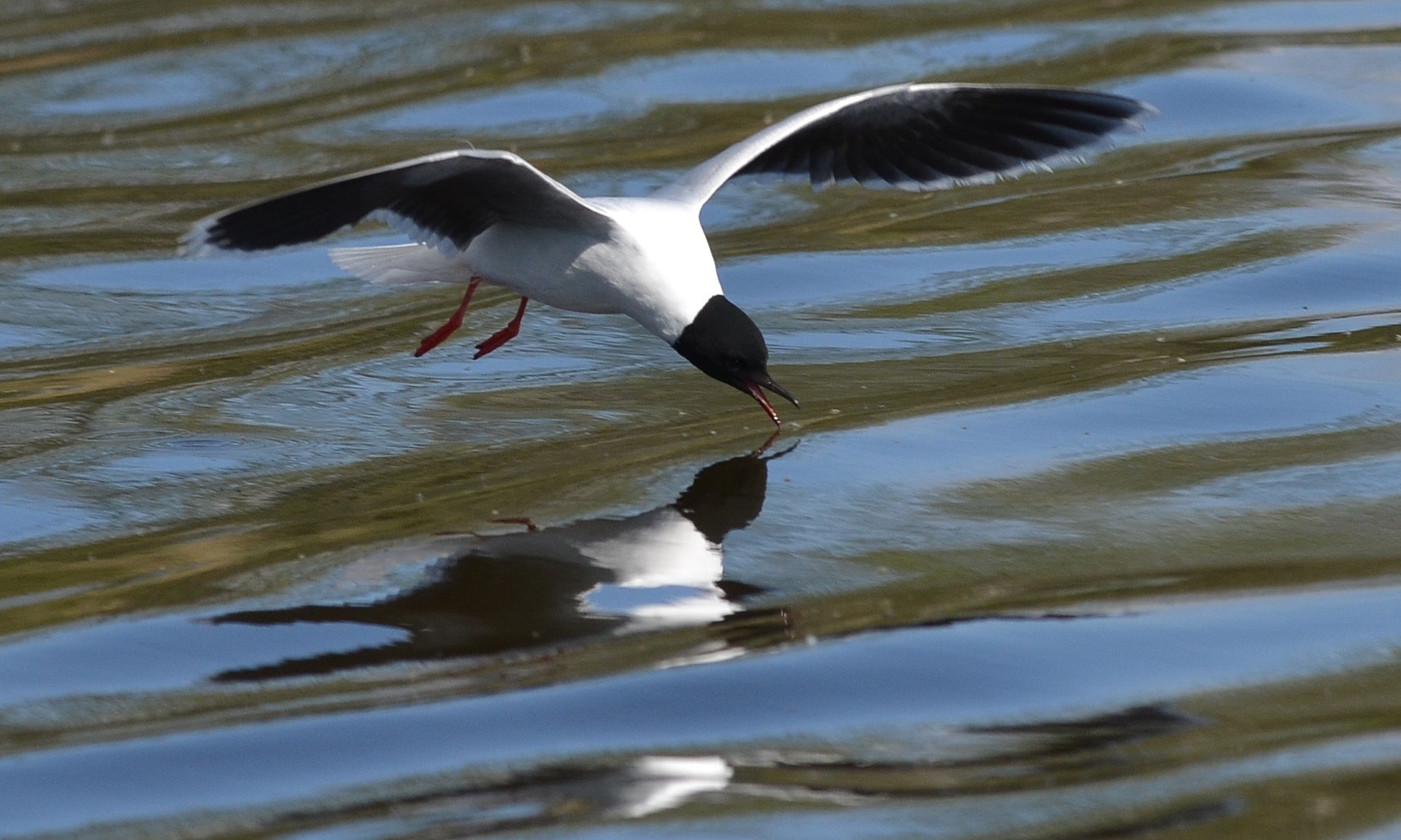Little Gull
A species of Little Gull Scientific name : Hydrocoloeus minutus Genus : Little Gull
Little Gull, A species of Little Gull
Botanical name: Hydrocoloeus minutus
Genus: Little Gull
Content
Description General Info
 Photo By Ekaterina Chernetsova (Papchinskaya) , used under CC-BY-2.0 /Cropped and compressed from original
Photo By Ekaterina Chernetsova (Papchinskaya) , used under CC-BY-2.0 /Cropped and compressed from original Description
The little gull (Hydrocoloeus minutus or Larus minutus), is a small gull that breeds in northern Europe and across the Palearctic. The genus name Hydrocoloeus is from Ancient Greek hydro, "water", and koloios, a sort of web-footed bird. The specific minutus is Latin for "small". It also has small colonies in parts of southern Canada. It is migratory, wintering on coasts in western Europe, the Mediterranean and (in small numbers) the northeast United States; in recent years non-breeding birds have summered in western Europe in increasing numbers and in 2016 they successfully nested for the first time in Great Britain at the Royal Society for the Protection of Birds reserve at Loch of Strathbeg reserve in Aberdeenshire. As is the case with many gulls, it has traditionally been placed in the genus Larus. It is the only member of the genus Hydrocoloeus, although it has been suggested that Ross's gull also should be included in this genus. This species breeds colonially on freshwater marshes, making a lined nest on the ground amongst vegetation. Normally 2–6 eggs are laid. This is the smallest gull species, with a length of 25–30 cm (9.8–11.8 in), a wingspan of 61–78 cm (24–31 in), and a mass of 68–162 g (2.4–5.7 oz). It is pale grey in breeding plumage with a black hood, dark underwings and often a pinkish flush on the breast. In winter, the head goes white apart from a darker cap and eye-spot. The bill is thin and black and the legs dark red. The flight on rounded wings is somewhat tern-like. Young birds have black markings on the head and upperparts, and "W" pattern across the wings. They take three years to reach maturity. These gulls pick food off the water surface, and will also catch insects in the air like a black tern. 
Size
25-28 cm (10-11 in)
Life Expectancy
6 years
Nest Placement
Ground
Clutch Size
1 - 4 eggs
Feeding Habits
Little Gull predominantly feed on insects, small fish, and aquatic invertebrates. They employ flying low and hovering over water to pick prey from the surface or just below, and dive to capture deeper prey. They catch insects mid-air, snatch larvae from trees, and exploit boats and river rapids for fish.
Habitat
Little Gull primarily resides in lowland freshwater wetlands with emergent vegetation like reeds and rushes, known to nest on floating debris as well. They are adaptable, also inhabiting brackish environments. During migration, their habitats extend to inland rivers, lakes, oceanic beaches, and pelagic waters across broader regions including the Great Lakes and towards Hudson Bay.
Nest Behavior
Both male and female little Gull collaborate to create a preliminary nest scrape, then jointly build the nest post egg-laying. Nest dimensions reach 3.2 inches in height with a 4.7 inch wide interior cup. Parental care includes shared responsibilities in nest construction and chick rearing.
Nest Characteristics
Little Gull typically nests on the fringes of freshwater or brackish wetlands, utilizing emergent vegetation like rushes or reeds, or occasionally muskrat dens along shorelines. Their nests are shallow cups around 7.2 inches wide, constructed from stalks of surrounding vegetation, often lined with algae.
Dite type
Aquatic invertebrate eater
General Info
Feeding Habits
Bird food type
Behavior
Little Gull display a fascinating array of behaviors, particularly during their breeding season. Upon arrival at their breeding grounds, complex courtship rituals ensue, involving close physical proximity, synchronized movements, and vocal communications. They engage in unique practices like circling each other and performing a 'choking display' at the nest. These birds are even known to accept additional adult conspecifics during breeding. Unlike some gull species, little Gull tolerate the proximity of others in their breeding territory and coexist with terns. Both parents invest in nest building, incubation, and chick rearing, showcasing their collaborative nature in raising offspring.
Species Status
Not globally threatened.